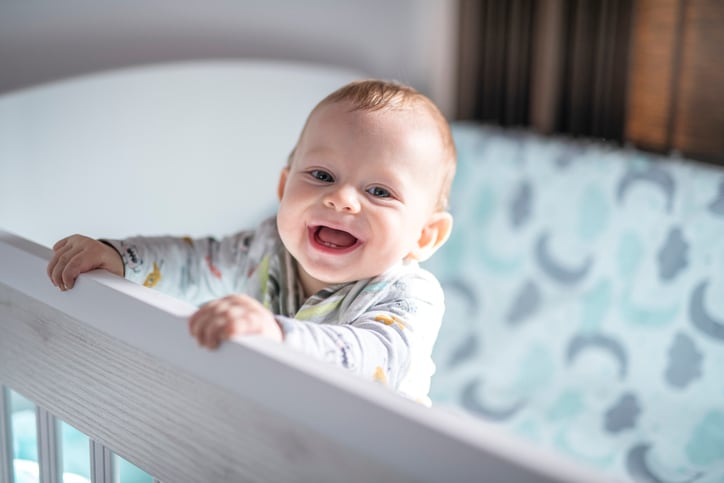The contented purr of a cat is one of the most recognisable sounds in the animal kingdom, but what does it mean when a cat purrs? Humans associate the low-frequency rumble with happiness and pleasure, but there’s more to it than just joy. Cats purr for many reasons, from comfort to communication and from self-soothing to healing.
What is purring?
The sound a cat makes when it purrs is created by a unique bone structure running from the back of a cat’s tongue to the very base of its skull. When a cat vibrates its larynx, the delicate u-shaped hyoid bone resonates rhythmically and this, combined with the air vibrating across the laryngeal muscles, creates the purring sound.
Purring and roaring
This ability to purr is unique to smaller cats, and surprisingly, no cat can both purr and roar. Bigger cats such as lions and tigers have a slightly different skeletal construction with tougher cartilage, which prevents the hyoid bone from resonating but enables them to produce a deep and resounding roar.
Why do cats purr?
Why? Well, it’s complicated, and the exact meaning of a cat’s purr is still unclear. Like a human smile, it is thought to be partly voluntary and partly instinctive. One theory is that purring is a form of communication. Kittens are born deaf and blind, yet they begin to purr after just a few days. This evolutionary ability helps them to communicate with their mother, attracting her attention when they are hungry or need warmth.
Cats can also purr in a variety of ways, and the pitch and volume of their purr can vary depending on their mood. This suggests that cats may be using purring to communicate with each other (or with their humans). This may be with the intention of expressing their emotions or to trigger a positive response.
The purr of pleasure
We cat caregivers are most familiar with the purr of happiness our contented cats make when they are pleased. Cats purr to show affection and to demonstrate that they feel safe and comfortable in our company. (Want to help give your cat the kind of enrichment it needs to feel happy and fulfilled? Here are some easy homemade toy ideas to help you out.)
The solicitous purr
A study in 2009 found that some domestic cats were able to “hide” a sorrowful cry within their purr which prompted their owner’s nurturing instincts. This type of purr is known as a “solicitation purr” and has a similar frequency range to human babies’ cries. The meaning of a cat’s purring in this instance is to elicit affection, attention or food. (You can read more about this study here.) As many cat-owners state that they feed their cat before they feed themselves, it seems the solicitous purr is a pretty effective tool!
Help to heal
When cats make a purring noise, their vocal cords vibrate at a frequency of between 25 and 150 hertz. This frequency has been shown to support pain relief, stimulate bone growth and assist with fracture healing. Domestic cats have adapted to conserve their energy, enjoying long spells of rest and sleep. Experts have suggested that purring could stimulate and repair their bodies without them expending much energy. So, when you see your cat dozing and purring, they may actually be engaging in a little self-repair!
Purring is healthy for cats (and their caregivers)
The purring mechanism also has multiple additional health benefits for cats, including:
- Reducing stress
- Alleviating pain
- Decreasing inflammation
- Stimulating endorphins, the happy hormone
- Improving bone density and blood circulation
- Reducing congestion
Petting a purring cat has long been associated with a reduction in stress and blood pressure in humans too. Research has shown that cat ownership could cut the risk of a stroke or heart disease by as much as a third.
A self-soothing behaviour
Another theory is that purring is a way for cats to self-soothe and cope with pain or stress. This can sometimes be seen when cats give birth. During the first stages of labour, these clever cats often begin to purr as a way to relieve stress and anxiety, and to release pain-killing hormones.
Vets also report that cats often purr during consultations, suggesting they are using the behaviour to reduce the stress they feel in a potentially worrying environment.
Cat-chat is complicated
There are some additional theories that help answer the question “why do cats purr?”:
- Some experts believe that purring is used for social bonding. Mother cats also often purr while nursing their kittens. This is thought to create a strong bond between them.
- The low vibrations of a cat’s purr can travel over distance, and it is believed cats communicate their availability through purring, helping them to find a mate.
- Purring displays a lack of aggression or threat to other cats, if they accidentally wander into another cat’s territory.
So, what does it mean when a cat purrs?
It could mean many things! The next time you hear your cat purr, take a moment to review their mood, their environment and their body language. These factors should help you determine exactly what your cat is trying to communicate with their purr in that moment.
Purring is a unique and special behaviour, and it is just one of the many things that makes cats such wonderful companions.


